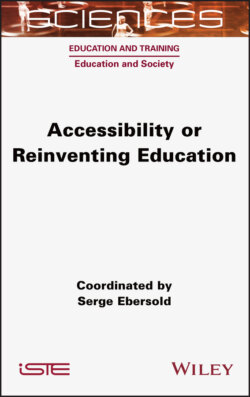Читать книгу Accessibility or Reinventing Education - Группа авторов - Страница 19
1.3.2. An integrated approach to accessibility targeting the fight against educational failure
ОглавлениеThe accessibilization of the school environment is organized in a complementary way around an integrated approach to accessibility that takes into account the inequalities in situations, caused by the difficulties teachers face in taking the diversity of educational profiles into account (OECD 2019). It consists of an intensification of support arrangements by the school in order to prevent any disruption of equality caused by failure or dropping out. In most European Union countries, these are support measures targeting pupils at risk of failure at school, with the aim of repeating what has been done in the course, but at a different pace and using different teaching methods (Eurydice 2014; Lescouarch 2014; Ebersold 2016). Such measures are intended to enable the targeted pupils to master their academic expectations and are, for the most part, the responsibility of school principals or teaching teams (Reverdy 2017). They may take the form of personalized support measures outside the classroom. In France, the PPRE, or “projet personnalisé de réussite éducative” (personalized educational success plan), aimed at pupils who have insufficient mastery of certain skills and knowledge, offers educational support including diversified and differentiated pedagogical practices, of adjustable duration, according to the progress made by the pupil. The PAP, or “projet d’accompagnement personnalisé” (personalized support plan), proposed by the teachers’ council, the class council or the family, targets pupils with lasting educational difficulties originating in one or more learning difficulties and requiring pedagogical adaptations so that they can continue their school career with reference to the objectives of the cycle. Lastly, the PAI, or “projet d’accompagnement individualisé” (individualized support plan), envisaged by the headteacher or school doctor, targets pupils requiring accommodations (follow-up on medical treatment or a protocol in case of emergency) owing to a disabling health disorder (chronic pathologies, food intolerances, allergies).
In most European Union countries, these support measures also take the form of adapted teaching in special classes. In France, pupils with serious and persistent educational difficulties that have not been remedied by preventive, aid and support measures can benefit from adapted general and vocational education aimed at individualizing their secondary school careers and acquiring a diploma qualification at the end of the cycle in sections d’enseignement général et professionnel adapté (adapted general and vocational education sections) (SEGPA). These “bridging systems” are designed to reintegrate pupils who are in the process of dropping out of school and desocializing into a mainstream education system in order to promote their mastery of the common skills base, as well as learning of the rules of social and school life.
However, these supports are not restricted to students. The support role of professionals specializing in managing school diversity is also aimed at school stakeholders. In particular, their mission is to support headteachers in developing and implementing a school policy focused on the accessibilization of school environments and the prevention of difficulties at school. They are also often responsible for coordinating, in conjunction with members of the education community, the implementation of support measures and student support. It is also their responsibility to respond to teachers’ requests for advice on the development of pedagogical responses to educational needs and to work on the accessibility of learning within the framework of existing programs or co-teaching actions, and so on (UNESCO 2017).
